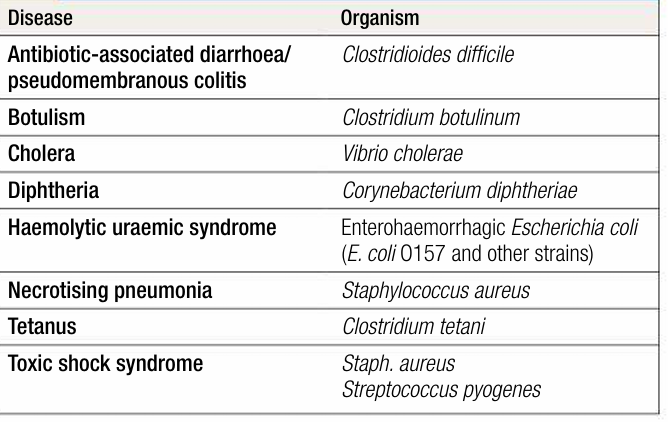
Determinants of virulence
 المؤلف:
Stuart H. Ralston , Ian D Penman, Mark W J Strachan , Richard Hobson
المؤلف:
Stuart H. Ralston , Ian D Penman, Mark W J Strachan , Richard Hobson
 المصدر:
Davidsons Principles and Practice of Medicine
المصدر:
Davidsons Principles and Practice of Medicine
 الجزء والصفحة:
24th Edition , p102
الجزء والصفحة:
24th Edition , p102
 2025-01-21
2025-01-21
 829
829
For a primary pathogen to cause infection in a healthy host it must compete with colonising flora to reach target host cels. It can do this in various ways, including sequestration of nutrients, adapting metabolism to exploit metabolites not used by commensal flora, production of bacteriocins, and using motility to ‘swim’ to the site of infection. Many microorganisms, including viruses, use ‘adhesins’ to initiate their attachment to host cels. Some pathogens can invade through tis sues. Many bacteria and fungi multiply after initial adhesion to a host surface to form ‘biofilms’. These are complex three-dimensional structures surrounded by a matrix of host and bacterial products, which afford protection to the colony and limit the effectiveness of antimicrobials. Biofilm-related infections on man-made medical devices such as vascular catheters or grafts can be particularly difficult to treat. Pathogens may produce toxins, microbial molecules that cause adverse effects on host cels, either at the site of infection, or remotely following carriage through the blood stream. Endotoxin is the lipid component of Gram-negative bacterial outer membrane lipopolysaccharide. It is released when bacterial cels are damaged and has generalised inflammatory effects. Exotoxins are proteins released by living bacteria, which often have specific effects on target organs (Box 1). Intracellular pathogens, including viruses, bacteria (e.g. Salmonella spp., Listeria monocytogenes and Mycobacterium tuberculosis), parasites (e.g. Leishmania spp.) and fungi (e.g. Histoplasma capsulatum), are able to survive in intracellular environments, including after phagocytosis by macrophages. Pathogenic bacteria express different genes, depending on environmental stress (pH, iron starvation, O starvation etc.) and 2 anatomical location. Genetic diversity enhances the pathogenic capacity of bacteria. Some virulence factor genes are found on plasmids or in phages and are exchanged between different strains or species. The ability to acquire genes from the gene pool of all strains of the species increases diversity and the potential for pathogenicity. Viruses exploit their rapid repro duction and potential to exchange nucleic acid with other strains of the virus to enhance diversity. Once a new strain acquires sufficient virulence genes, including those enhancing infectivity, it may become an epidemic or pandemic strain, resulting in regional or global transmission, respectively . This phenomenon accounts for influenza and COVID-19 pandemics.

BOX 1. Exotoxin-mediated bacterial diseases
 الاكثر قراءة في البكتيريا
الاكثر قراءة في البكتيريا
 اخر الاخبار
اخر الاخبار
اخبار العتبة العباسية المقدسة


